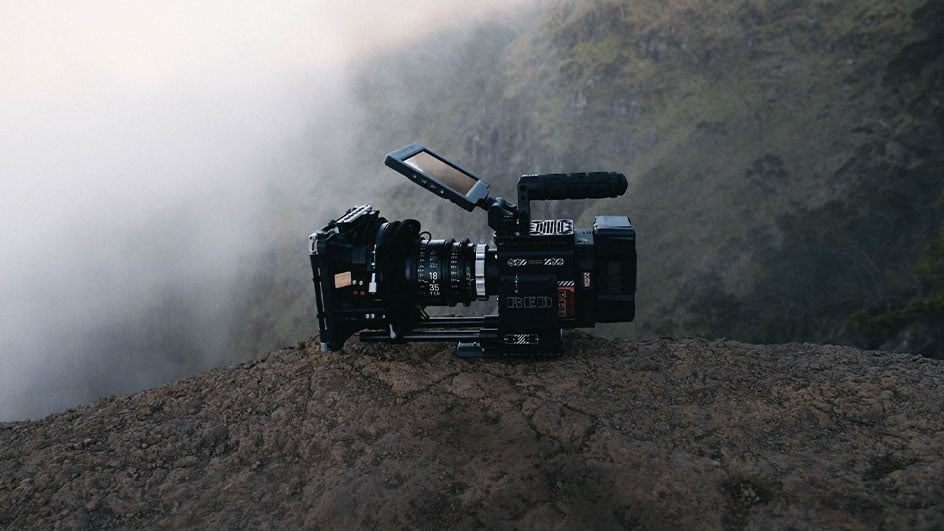
May 10, 2022
When working in film and video, there are a lot of terms to learn. Not only do you need to know about aspect ratios, gaffers, and mise-en-scene. You also need to know abstract terms which sometimes mean one thing, then sometimes mean something else.
“Cinematic” is probably my favorite of these terms. In some senses, it means absolutely nothing besides “this image looks pretty.” However, in other terms, it’s an important qualifier that distinguishes a high-end, job-specific video camera from the smartphone in your friend’s pocket.
So, for those who might be doing their research into which camera is right for their video needs, or perhaps those looking to see how their current camera compares to the competition, let’s quickly outline our picks for the actual best cinema camera currently on the market:
- Canon EOS C300 Mark III
- Blackmagic Ursa Mini Pro 12K
- Sony FX6
- Panasonic Lumix BS1H
- Red Komodo
- ARRI Alexa Mini
- Sony Venice 2
But, before we dive into each of these selections a bit more in-depth, let’s go over some basics first.
What makes a camera a cinema camera?
Now, this is a big question to answer in a short article which is supposed to be about camera options. Still, without going too in-depth on the specifics, we do need to clarify a few things which separate a cinema camera from your friend’s smartphone camera.
A cinema camera is any type of digital video camera that (more or less) has the following elements:
- Interchangeable lens mount
- 35mm sensor size (or better)
- Deep depth-of-field
- High dynamic range
- Low light performance
- In-camera log gamma
- 4K resolution (or higher)
- Modular design (and usable with an external recorder)
Now, please take this with a grain of salt as many of the elements included (or not included) may be debatable to different filmmakers or cinematographers. But in general, these are the basic features which every cinema camera should have.
Image Quality and Other Factors to Consider
The real crux of what you should consider for your cinema camera (as well as what might qualify as a cinema camera) really comes down to the image quality and other factors you might need to create cinematic footage.
There’s a real debate within the film and video world whether or not a smartphone can shoot “cinematic” footage. By some definitions, there have already been numerous feature films shot on iPhones or the like.
However, there’s also plenty to be said about the limitations of working with a non-cinema camera on a project where you can’t shoot 4K or with a high dynamic range to really capture the colors and looks many filmmakers might desire.
As such, for our list below we will be providing any aspiring filmmakers with the seven best selections that we could come up with for going out and shooting high-quality cinematic footage.
These are real bona-fide cinema cameras which represent the best investments for any serious video professionals, companies, or agencies looking to provide the best footage possible.
Canon EOS C300 Mark III
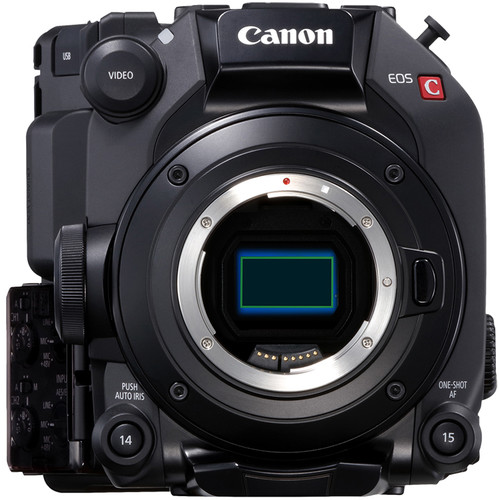
Our first selection is the Canon C300 Mark III as one of the best tried-and-true cinema cameras on the market. Taking a step up from the Mark II version, the current Canon camera is perhaps the best video camera when it comes to either shooting high-quality footage that looks great in a studio or run-and-gun documentary shooting handheld in low light situations.
With a Super 35mm sensor capable of 4K video at up to 120 fps, you’ll have plenty of DCI 4K to use, which is recorded directly to your CFexpress card (and with two slots).
The 16-stops of high dynamic range really set this cinema camera body apart from your other mirrorless cameras or DSLR offerings, as its beautiful image quality combines well with all of its practical bells-and-whistles for professional video production. (And it's truly a great cine camera to invest in to level up your Canon mirrorless camera.)
- Super 35mm Dual Gain Output (DGO) Sensor
- 4K 120p, 2K Crop 180p HDR
- Cinema RAW Light and XF-AVC H.264 Codec
- EF Lens Mount, DIG!C DV7 Image Processor
- Dual Pixel CMOS AF and Face Detection
- LM-V2 4.3" LCD Touchscreen Monitor
- 12G-SDI and 4-Channel Audio Recording
- 2 x CFexpress Slots, Canon Log2 and 3
- Electronic Image Stabilization
- Proxy Recording, Anamorphic Lens Support
Price: $10,999.00
Blackmagic URSA Mini Pro 12K
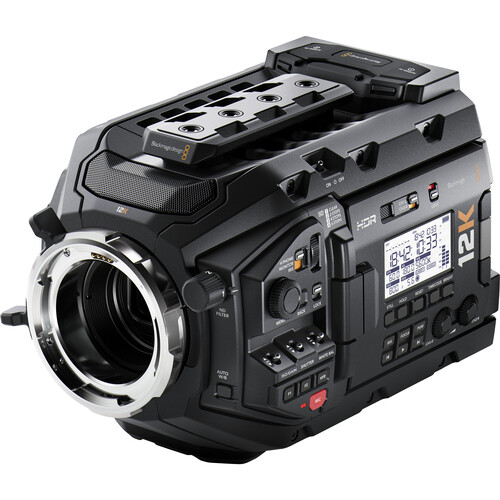
After spending years being known for color editing software, Blackmagic Design actually has several cinema quality cameras which we could shout out on this list. (Most notably the Blackmagic Pocket Cinema Camera 4K, the Blackmagic Pocket Cinema Camera 6K, and the Blackmagic Pocket Cinema Camera 6K Pro are all right there on the cusp of cinema quality but at a fraction of the budget.)
That being said, the Blackmagic URSA Mini Pro 12K might be the current best of the bunch with its insane video recording capabilities and low light performance. It can certainly broadcast as well, but the Mini Pro 12K is simply one of the best options for all your commercial shoots, corporate videos, and even indie shorts or features.
With a 12K Super35 sensor, 14 stops of dynamic range, and some beautiful new Blackmagic color science, you can rest assured that your footage is going to look absolutely stunning and comparable to any camera currently in existence.
- 12K Super35 HDR CMOS Sensor
- 12K 17:9 to 60 fps/12K 2.4:1 to 75 fps
- DCI 8K to 120 fps/14 Stops Dynamic Range
- User-Changeable PL Lens Mount
- 4K Super16 up to 220 fps
- 80MP/frame Blackmagic Raw
- Dual CFast or SD Card Recording
- USB Type-C Recording to Disk/SSD
Price: $5,995.00
Sony FX6
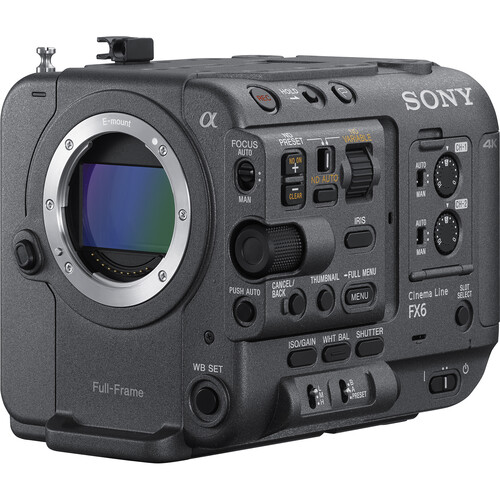
For our list to be complete, we also have to look at perhaps the best cinema camera from Sony. And the Sony FX6 is certainly one of the Sony cameras to talk about right now, as it’s perhaps the best Sony camera in terms of functionality-to-price ratio.
With a 4K 10.2MP CMOS full-frame sensor capable of recording DCI 4K at up to 60 fps (and UHD 4K at up to 120fps), the FX6 has become a real workhorse in the industry for professionals of any ilk.
The 15+ stops of dynamic range also don’t hurt, as Sony’s FX6 is quickly becoming a go-to camera for all types of projects — not just in the studio, but also out on low light locations or in the field. It’s also surprisingly compact and lightweight compared to some others on the list, so feel free to grab this one and go with little worry about where it might fit into your workflow.
- 4K Full-Frame 10.2MP CMOS Exmor R Sensor
- DCI 4K60p | UHD 4K120 | 1080p240
- 15+ Stops of Dynamic Range in S-Log 3 EI
- Compact Form Weighs Just <2 lb
- Phase Detection AF/Face Tracking/Eye AF
- Base 800-12,800 ISO / 320-409,600 Max
- S-Cinetone, S-Log3, HLG Modes
- 10-Bit 4:2:2 XAVC-I/16-Bit Raw Output
- Dual CFexpress Type A/SDXC Card Slots
Price: $5,998.00
Panasonic Lumix BS1H
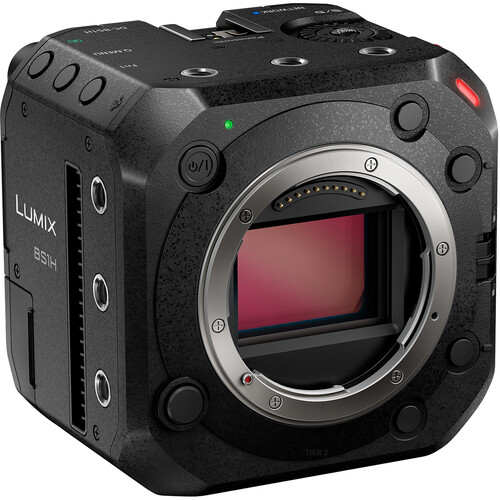
One of the “cheapest” options on our list that still satisfies our basic tenets of what makes a cinema camera actually a cinema camera, the Panasonic Lumix BS1H is a behemoth. Designed as a “box camera,” the BS1H is really meant to be modular and tailored for your individual production needs as it can be built up as big (or as small) as you want.
It also has a very powerful 24.2MP full-frame MOS sensor capable of up to 5.9K H.264 video recording, plus plenty of dynamic range (14+ stops), dual-native ISO, and some beautiful V-Log recording. It’s a bit newer to the group, but with a price under $3,500 it might be the easiest upgrade from your current mirrorless cameras options.
- 24.2MP Full-Frame MOS Sensor
- Up to 5.9K H.264/H.265/HEVC Recording
- 14+ Stops of Dynamic Range, HLG Imaging
- Dual-Native ISO, VariCam Look & V-Log L
- VFR up to 60 in 4K, up to 180 fps in FHD
- Ethernet with PoE+, VBR Battery Mount
- Anamorphic Video & 3D LUT Support
- Durable Magnesium & Aluminum Body
- 12 VDC Power Adapter Included
Price: $3,497.99
RED KOMODO 6K
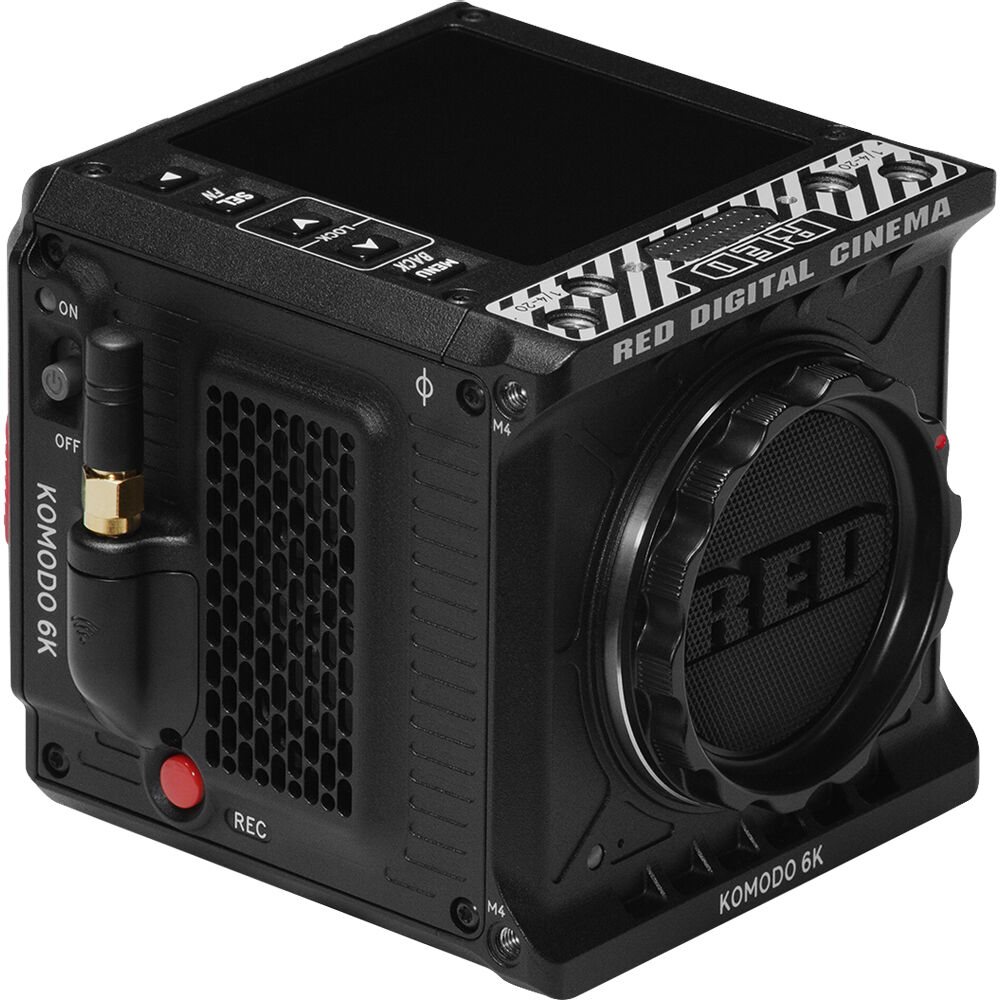
We’d be sorely remiss if we put together a “best cinema camera” list and didn’t include at least one RED camera to choose from. Long known for their industry-breaking cinema cameras and their loyal fanbase of video shooters, the RED KOMODO 6K might actually be their most accessible camera for those who haven’t drank the RED Kool Aid yet.
With a 19.9MP Super35 CMOS sensor with Global Shutter technology, a whopping 16+ stops of dynamic range for low light performance, and the ability to record up to 6K at 40 fps (plus 4K at 60 fps), the KOMODO 6K is a beautiful concoction of all things that make RED cameras great.
The KOMODO 6K also includes all the great RED control system smartphone integrations and wireless controls as well.
- 19.9MP Super35 Global Shutter CMOS
- Compact, 2.1 lb All-in-One Design
- Canon RF Lens & ARRI CFast 2.0 Support
- 16+ Stops Dynamic Range
- Up to 6K40, 5K48, 4K60 & 2K120 Recording
- REDCODE RAW HQ/MQ/LQ & Apple ProRes
- Integrated 2.9" 1440 x 1440 Touchscreen
- Wireless Control & Preview via Wi-Fi
- CFast 2.0 Card Slot; RED IPP2 Support
- EF-to-RF Mechanical Adapter Included
Price: $5,995.00
ARRI ALEXA Mini LF
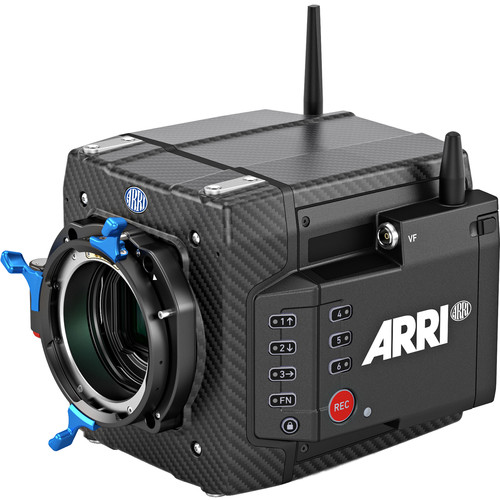
When most filmmakers and professional videographers talk about cinema cameras, there are usually two levels to consider. The cameras we’ve listed above would fall into the “over-the-counter” (and under $6,000 range) options, which are sort of hybrids that share several similarities with your run-of-the-mill digital cameras.
The next tier is usually associated with cameras like the ARRI cameras (as well as REDs and others) which, in most instances, you can only get your hands on by renting from a production house.
The ARRI ALEXA Mini LF is one of these upper echelon cameras that, while more exclusive, is about as accessible as a camera at this tier can be. With a large-format 4448 x 3096 sensor capable of recording native 4K video in ARRIRAW and ProRes, the ARRI ALEXA Mini LF will absolutely blow many of these other cameras out of the water.
You should know that the price jumps up quite a bit from the previous cameras on this list. However, the ARRI ALEXA Mini LF has been used to shoot many of the biggest films of our day like The Power of the Dog or Dune: Part One.
- Large-Format 4448 x 3096 Sensor
- Native 4K Recording in ARRIRAW & ProRes
- Large-Format Optimized LPL Lens Mount
- Open Gate, 16:9 & 2.39:1 Anamorphic Mode
- Native 800 ASA, 14+ Stops Dynamic Range
- Array of ARRIRAW & ProRes Capture Modes
- Works with Most ALEXA Mini Components
- Internal FSND 0.6, 1.2 & 1.8
- PL-to-LPL Adapter Included
Price: Rental rates apply
Sony VENICE 2 8K
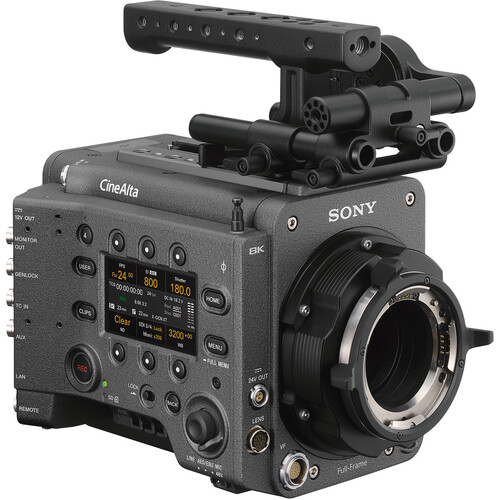
Along with the ARRI ALEXA Mini LF, we also have to include another highest-end cinema camera on our list for those who are dead serious about producing content at the best clip possible. The Sony VENICE 2 is another 8K behemoth that boasts 4K ProRes video with 4444/422HQ internal raw recording.
16 stops of dynamic range, 8.6K footage at 30 fps, and some very versatile dual-range based ISO at 800/32000 mean this camera is indeed one of the best options for any video production project under the sun.
However, as with any ARRI camera or other higher-end options, your best bet for working with the VENICE 2 would be to rent it on a project-by-project basis. And make sure you (or your DP) really know what they're doing to get the most out of this cinema camera.
- X-OCN Internal Recording
- 4K ProRes 4444/422HQ Internal Recording
- Interchangeable CMOS 8.6K Sensor Block
- 16 Stops of Dynamic Range
- 800/3200 Base ISO Range
- Removable PL Mount, Cooke /i Protocol
- Sony E-Mount with Electronic Contacts
- 8 x Integrated ND Filters Plus Clear
- Integrated Assistant-Side Info Screen
Price: Rental rates apply
Further reading
Those are our picks for the best cinema camera currently on the market. If these cameras are in the right price range and boast the right specs for your needs, then hopefully we’ve helped you on your journey to pick the right camera for you.
However, if you’re looking for other camera options at other price points, or simply want to spend some more time developing your cinematography craft, check out these other guides and resources below: